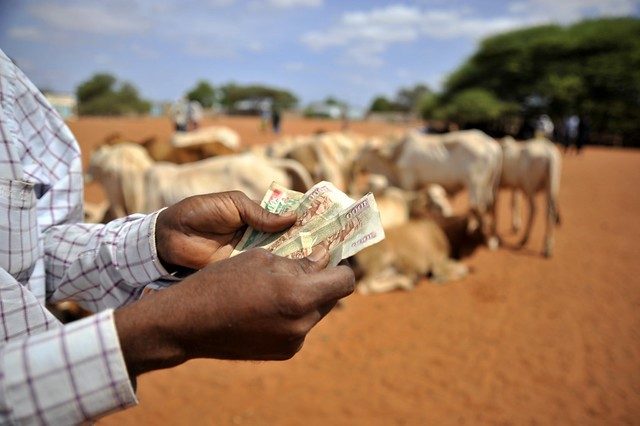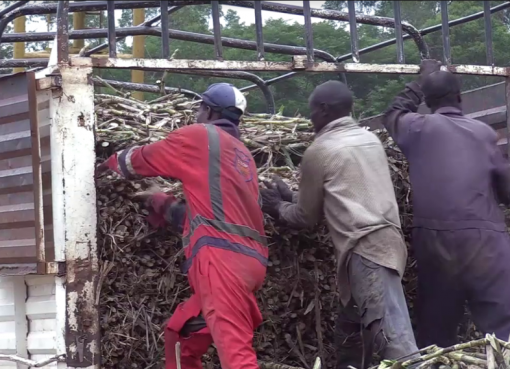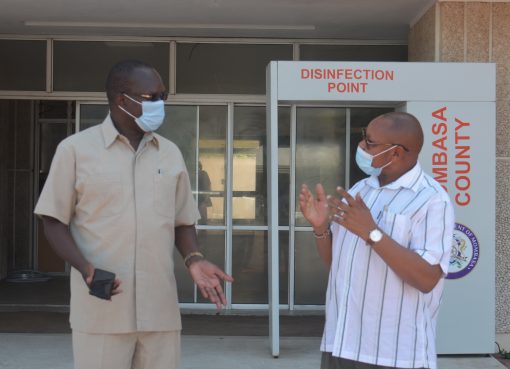Sheep and goats, also referred to as shoats, play an important role in supporting the livelihoods of livestock keepers in Kenya, particularly among pastoralists in the Country’s Arid and Semi-Arid Lands (ASALs).
Sale of meat and milk from the small ruminants also contributes substantially to Kenya’s economy. The in its Economic Survey report of 2015 records that ‘the marketed production of livestock and its products increased due to an increase in sheep and goats sold to abattoirs’.
The survey further reveals that the number of sheep and goats slaughtered increased from 60,848,000 in 2013 to 61,385,000 in 2014.
But despite the significance of goat rearing in improving pastoralists’ livelihoods, numerous challenges hamper their production notably a range of diseases and feeding constraints. One of the diseases that greatly affects goats and causes major economic losses in goat production is Contagious Caprine Pleuropneumonia (CCPP).
According to Wajir County’s Eldas Sub County Veterinary Officer Dr. Luke Kamau, CCPP is a highly fatal infectious respiratory disease that primarily affects goats and wildlife. However, sheep may be affected in CCPP outbreaks affecting mixed goat and sheep herds. It is widespread and endemic in the pastoral production areas in Kenya.
In response to the disease and animal health challenges facing pastoralists in Kenya, the Feed the Future Kenya Accelerated Value Chain Development (AVCD) programme, through its livestock component is helping improve the value of livestock and its productivity through better animal disease surveillance and improved healthcare for animals, says Dr. Kamau.
Ultimately, it is hoped that these efforts will lead to improved income and nutritional status of the households in Wajir County.
The programme focused on Wajir County’s Northern Sub County where there have been incidences of high goat mortality as a result of CCPP. In early 2016, the Wajir County veterinary services department recorded up to 50% mortality rate of goats as a result of a CCPP epidemic.
In collaboration with the county government and other AVCD partners, including the Feed the Future Resilience and Economic Growth in Arid Lands – Improving Resilience (REGAL IR) initiative and Sidai Agro-vet, the International Livestock Research Institute (ILRI) is promoting a public-private partnership model for sustainable animal health service delivery in the County.
County Veterinary Director Dr. George Kiprono says the use of a model has facilitated greater interaction and linkages between stakeholders drawn from the public sector such as the County government and other players such as Non-Governmental Organizations to improve CCPP (and other diseases) reporting, regulation and quality control.
“It is also enabling the public sector to leverage on private sector resources to provide and improve animal health services to livestock keepers,” notes Dr. Kiprono, adding that linkages have been established between the State departments of livestock, government ministries, the community disease reporters, farmers and private agro-vets and animal health service providers.
For example, Sidai Agro-Vet based in Wajir town and with branches in 7 sub counties of Wajir is working closely with the livestock and veterinary offices to supply vaccines and carry out vaccination against CCPP.
Additionally, said Dr. Kiprono, in May 2016, the programme trained 101 farmers and 6 community disease reporters on common goats and sheep diseases. Private animal health technicians also received training on commonly used drugs, practical training sessions on vaccine administration to goats and sheep and variation of vaccines and doses administered per species.
Specifically in response to the reports on goat mortality in Wajir North sub- County, the AVCD livestock component organized and facilitated a vaccination campaign in May 2016, targeting two common diseases—CCPP and Sheep and Goat Pox (SGP).
A total of 17,419 shoats comprising 12,229 goats and 5,190 sheep were vaccinated against CCPP and SGP, disclosed Dr. Kiprono during an interview in his office recently.
The programme is looking to expand the training sessions and vaccination campaigns to the whole of Wajir County and other neighbouring counties in the region such as Marsabit, Turkana, Isiolo and Mandera.
The AVCD programme seeks to widely apply technologies and innovations to competitively and sustainably increase productivity, contributing to inclusive agricultural growth, nutrition and food security in Kenya.
It is implemented in 21 counties in western, eastern and northeastern parts of the country through four value chains—dairy, livestock, root crops and drought tolerant crops.
To further curb diseases affecting sheep and goats, a county-wide Participatory Epidemiological (PE) study was carried out in Wajir County between November 2017 and April 2018 with the aim of mapping and combating livestock diseases.

Carried out with collaboration between the County Government and, the study aimed at mapping priority livestock diseases in camel, goats, sheep and cattle.
According to the report, data collected by 48 focus groups in 16 sites spread across the County identified Contagious Caprine Pleurneumoniae (CCPP), Sheep and Goat Pox, Peste des Petits Ruminants (PPR), abortion and impact/bloat syndrome as the main diseases for sheep and goats.
“Sheep and Goat Pox had the highest morbidity rate at 60% while CCPP had the highest mortality rate of 62 percent,” reads the report.
According to the County Director of Veterinary Services Dr. George Kiprono who participated in the survey, the study also revealed that abortion and impaction/bloat syndromes in goats and sheep was causing significant losses for livestock keepers in Wajir.
“The mapping study also revealed that livestock keepers in Wajir were shifting from rearing cattle to keeping more drought tolerant livestock species like goats and camels. The endemic presence of Foot and Mouth Disease and Contagious Bovine Pleuropneumonia was highlighted by an estimated overall county morbidity rate of 64 percent. This highlights that the county still has significant challenges in controlling important trade sensitive diseases that hinder it from engaging in lucrative international trade,” said the County’s Chief Veterinarian.
In conclusion, the mapping study was able to demonstrate the importance of conducting participatory disease surveillance (PDS). PDS technique involves communities thus making them an integral part of disease surveillance.
To curb disease spread, therefore, the report recommended the following to the County government; strategic treatment and vaccination of identified priority diseases and setting aside of a budget by the County to support PDS especially at the identified disease hot spot areas.
The County government was also required to boost surveillance capacity of all Department of Agriculture, Livestock and Fisheries (DALF) veterinary staff.
“The consultant recommends that staff should receive the full certifiable PE training course that takes two weeks. It also highlights the importance of routine sample taking and laboratory analysis before treatment should be encouraged,” the report reads.
DALF veterinary staff require continuous professional training to improve their diagnostic capacity, noted the report. The County was also urged to partner with staff from Ministry of Health to form a one health task force that investigates and puts in place control and preventive measures for zoonotic diseases such as Brucellosis, Rift Valley Fever, Rabies and Anthrax.
By Donald Ngala





